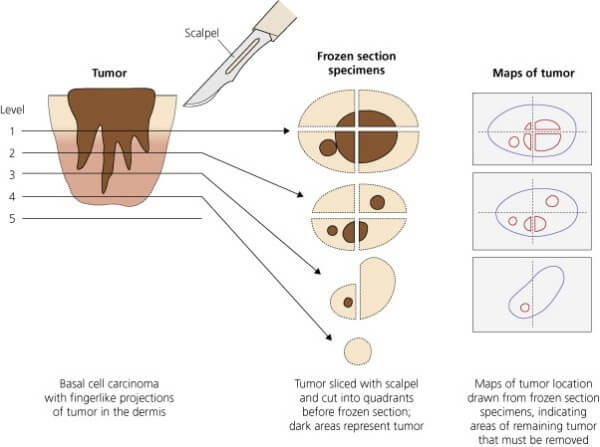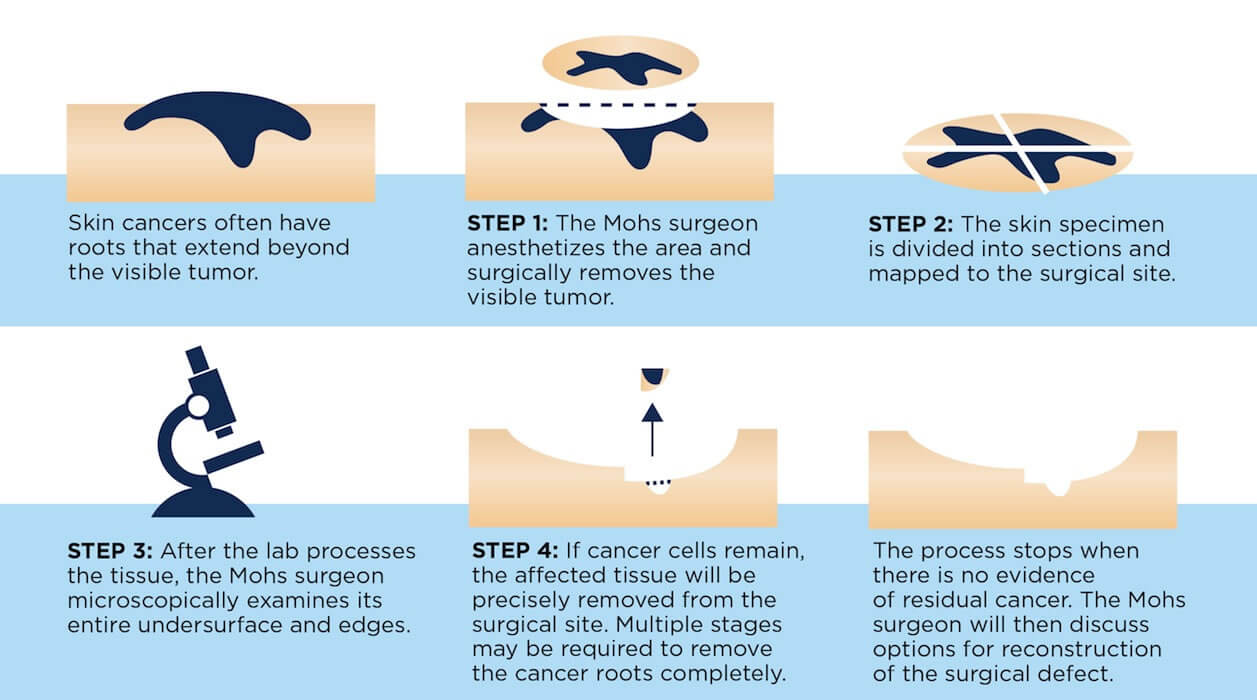THE HISTORY OF MOHS SURGERY
Mohs Surgery is the most effective, precise and tissue-sparing technique for treating most types of skin cancers. It is named for Frederic Mohs, MD, who pioneered this form of cancer treatment over 60 years ago. Over the years, it has been modified and refined to become the highly effective procedure it is today. Mohs surgery is also known as Mohs micrographic surgery.
During Mohs surgery, thin layers of cancer-containing skin are progressively removed and examined until only cancer-free tissue remains.
The end result is the removal of as little normal skin as possible. This technique has the highest rate of curing the cancer, even when other methods of treatment have failed.

WHAT ARE THE ADVANTAGES OF MOHS SURGERY?
Mohs surgery has many advantages. Mohs is a one-day outpatient surgery and is the most cost effective treatment of skin cancer. It has the highest cure rate for non-melanoma skin cancer with a five-year cure rate approaching 99 percent for new cancers, and 95 percent for recurrent cancers. Mohs also provides the greatest preservation of normal tissue, thereby minimizing scarring and preserving function.
Immediate tissue processing and examination occurs so there is no need to wait a week or more for pathology results. By using detailed mapping techniques and thorough microscopic examination, the Mohs surgeon can pinpoint areas involved with cancer that are otherwise invisible to the naked eye. Therefore, even the smallest microscopic roots of cancer can be removed.
WHAT IS MOHS SURGERY USED FOR?
Mohs Micrographic Surgery is primarily used to treat basal and squamous cell carcinomas, but can be used to treat less common tumors including early stage melanomas.


